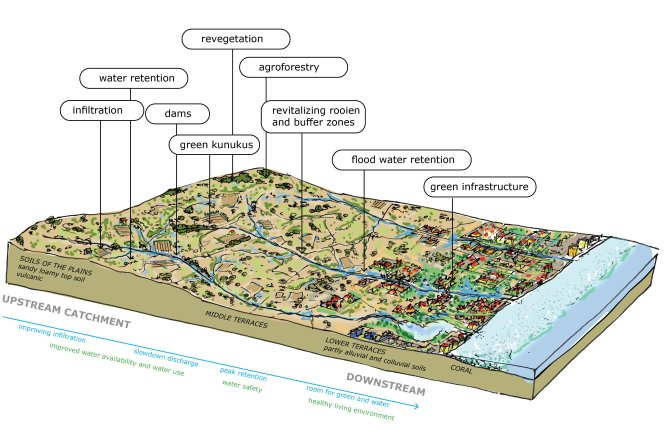
Project
Nature-based Solutions for flood resilience on Bonaire
Tackling urban flooding and the impact of heavy rainfall on Bonaire requires an integral approach with hybrid solutions. Restoring and revitalizing the natural system of Bonaire with Nature-based Solutions has potential.
